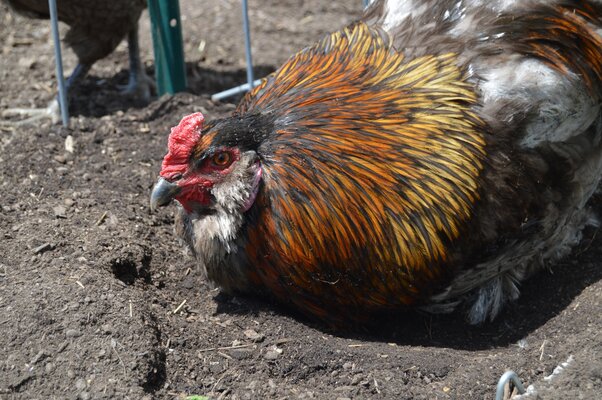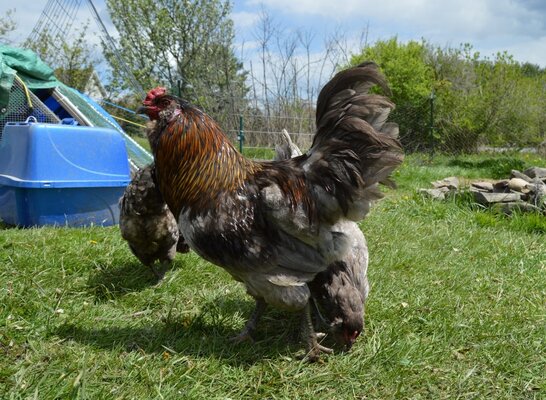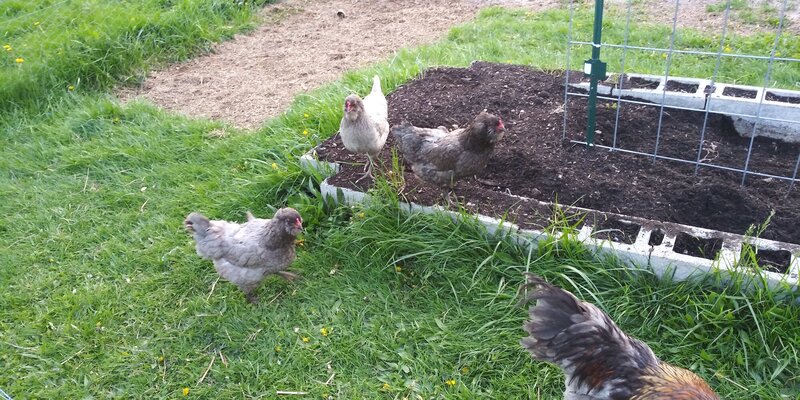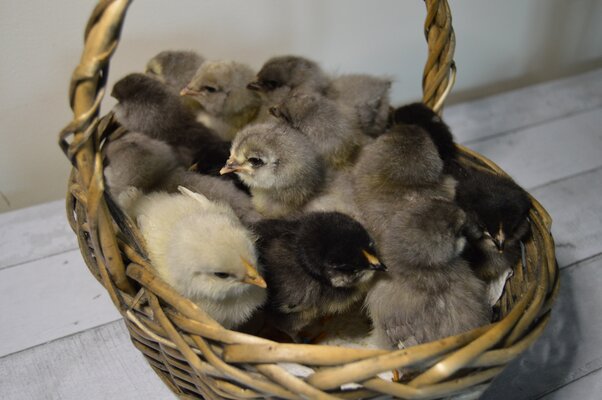So I have this Rooster he is Americauna EE mix
Blue/Black/Splash
I will be putting my light Sussex, white leghorns & a few Cream Legbars with him.
Any ideas what to expect from these mixes? I'm excited about the offspring possibilities!
Blue/Black/Splash
I will be putting my light Sussex, white leghorns & a few Cream Legbars with him.
Any ideas what to expect from these mixes? I'm excited about the offspring possibilities!








